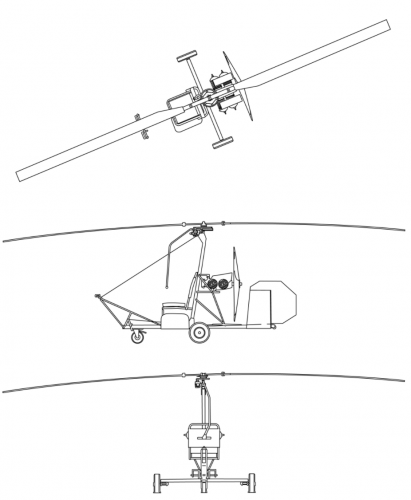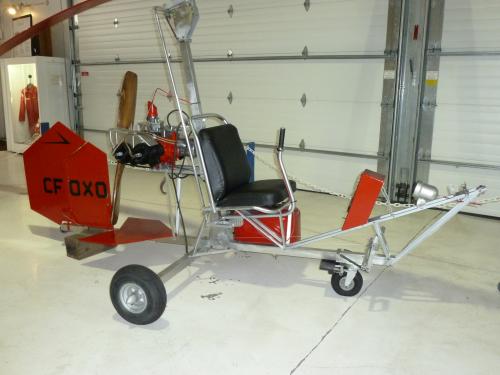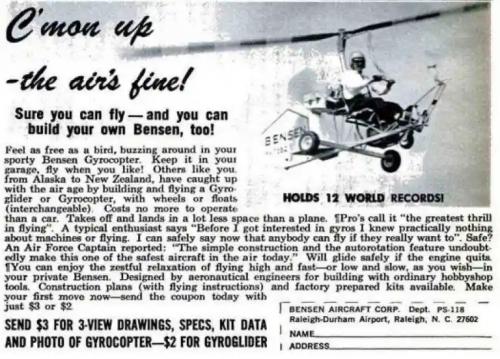The Bensen B-8 is a small, single-seat autogyro developed in the United States in the 1950s. Its design was a refinement of the Bensen B-7, and like that aircraft, the B-8 was initially built as an unpowered rotor-kite. It first flew in this form in 1955, and on 6 December a powered version, designated B-8M (M for motorised) first flew. The design proved to be extremely popular and long-lasting, with thousands of sets of plans sold over the next thirty years. The B-8's design is extremely minimalist, with not much more to the aircraft than a pilot's seat, a single tailfin, a rotor, and (in powered versions) the powerplant.
One B-8M, named Spirit of Kitty Hawk was used to make a special commemorative flight exactly duplicating the first flight of the Wright brothers' original Flyer on the sixtieth anniversary of the occasion. This same aircraft was flown by Igor Bensen himself between May 1967 and June 1968 to set twelve world and US speed, distance, and altitude records for autogyros, the largest number of such records to be held by any non-military rotorcraft.
An autogyro is characterized by a free-spinning rotor that turns because of the passage of air through the rotor from below. A separate propeller provides forward thrust, with the engine and propeller at the rear of the fuselage. Whereas a helicopter works by forcing the rotor blades through the air, drawing air from above, the autogyro rotor blade generates lift by changing the angle of the air as the air moves upwards and backwards relative to the rotor blade. The free-spinning blades turn by autorotation; the rotor blades are angled so that they not only give lift, but the angle of the blades causes the lift to accelerate the blades' rotation rate, until the rotor turns at a stable speed with the drag and thrust forces in balance. Pitch control is achieved by tilting the rotor fore and aft; roll control by tilting the rotor laterally (side to side). A rudder provides yaw control.
The Museum’s example was built in Canada in 1963.
A Bensen autogyro was featured in the movie "Mad Max 2: Road Warrior".
Technical Details:
Performance:


Fun Fact:
You could buy the plans by sending away for them, start with a Popular Mechanics ad from the 60's!
